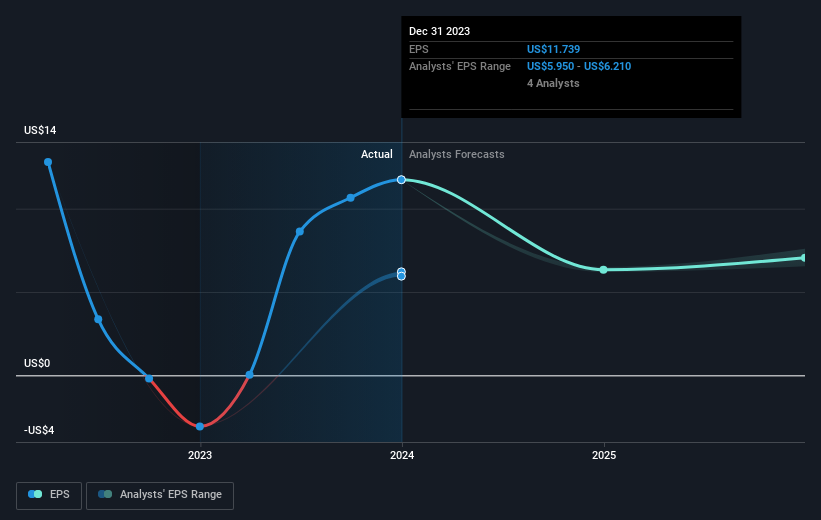Stock Analysis
- United States
- /
- Insurance
- /
- NasdaqGS:CINF
Cincinnati Financial's (NASDAQ:CINF) 9.5% CAGR outpaced the company's earnings growth over the same five-year period

When you buy and hold a stock for the long term, you definitely want it to provide a positive return. But more than that, you probably want to see it rise more than the market average. Unfortunately for shareholders, while the Cincinnati Financial Corporation (NASDAQ:CINF) share price is up 39% in the last five years, that's less than the market return. Zooming in, the stock is up just 0.7% in the last year.
The past week has proven to be lucrative for Cincinnati Financial investors, so let's see if fundamentals drove the company's five-year performance.
See our latest analysis for Cincinnati Financial
To paraphrase Benjamin Graham: Over the short term the market is a voting machine, but over the long term it's a weighing machine. One flawed but reasonable way to assess how sentiment around a company has changed is to compare the earnings per share (EPS) with the share price.
During the last half decade, Cincinnati Financial became profitable. That's generally thought to be a genuine positive, so we would expect to see an increasing share price.
The company's earnings per share (over time) is depicted in the image below (click to see the exact numbers).

We like that insiders have been buying shares in the last twelve months. Having said that, most people consider earnings and revenue growth trends to be a more meaningful guide to the business. It might be well worthwhile taking a look at our free report on Cincinnati Financial's earnings, revenue and cash flow.
What About Dividends?
As well as measuring the share price return, investors should also consider the total shareholder return (TSR). The TSR is a return calculation that accounts for the value of cash dividends (assuming that any dividend received was reinvested) and the calculated value of any discounted capital raisings and spin-offs. So for companies that pay a generous dividend, the TSR is often a lot higher than the share price return. We note that for Cincinnati Financial the TSR over the last 5 years was 58%, which is better than the share price return mentioned above. This is largely a result of its dividend payments!
A Different Perspective
Cincinnati Financial shareholders gained a total return of 3.6% during the year. But that was short of the market average. If we look back over five years, the returns are even better, coming in at 10% per year for five years. It may well be that this is a business worth popping on the watching, given the continuing positive reception, over time, from the market. I find it very interesting to look at share price over the long term as a proxy for business performance. But to truly gain insight, we need to consider other information, too. Even so, be aware that Cincinnati Financial is showing 1 warning sign in our investment analysis , you should know about...
Cincinnati Financial is not the only stock insiders are buying. So take a peek at this free list of growing companies with insider buying.
Please note, the market returns quoted in this article reflect the market weighted average returns of stocks that currently trade on American exchanges.
Valuation is complex, but we're helping make it simple.
Find out whether Cincinnati Financial is potentially over or undervalued by checking out our comprehensive analysis, which includes fair value estimates, risks and warnings, dividends, insider transactions and financial health.
View the Free AnalysisHave feedback on this article? Concerned about the content? Get in touch with us directly. Alternatively, email editorial-team (at) simplywallst.com.
This article by Simply Wall St is general in nature. We provide commentary based on historical data and analyst forecasts only using an unbiased methodology and our articles are not intended to be financial advice. It does not constitute a recommendation to buy or sell any stock, and does not take account of your objectives, or your financial situation. We aim to bring you long-term focused analysis driven by fundamental data. Note that our analysis may not factor in the latest price-sensitive company announcements or qualitative material. Simply Wall St has no position in any stocks mentioned.
About NasdaqGS:CINF
Cincinnati Financial
Cincinnati Financial Corporation, together with its subsidiaries, provides property casualty insurance products in the United States.
Solid track record with excellent balance sheet and pays a dividend.

